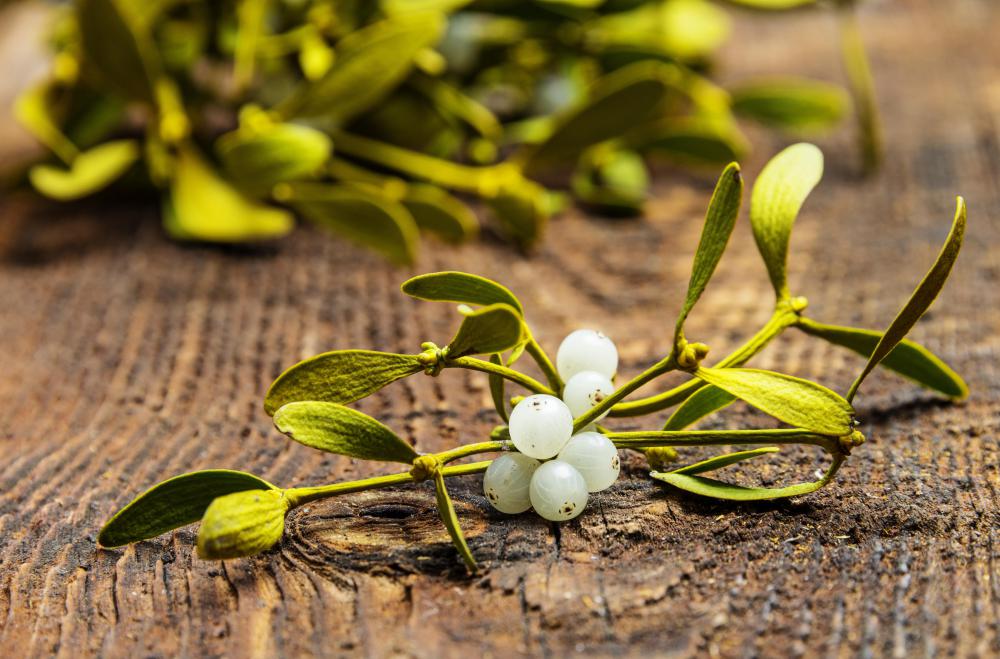At WiseGEEK, we're committed to delivering accurate, trustworthy information. Our expert-authored content is rigorously fact-checked and sourced from credible authorities. Discover how we uphold the highest standards in providing you with reliable knowledge.
What is a Parasitic Plant?
Parasites are organisms that derive some or all of their nutrients from other organisms, in a way that is not mutually beneficial. A parasitic plant is simply a plant that latches on to another plant and draws some or all of its nutrients from that plant. In some cases, this other plant may survive an attack by a parasitic plant, while in other cases the parasite may kill the other plant. Parasitic plants may be something that gardeners or naturalists have to keep an eye out for, especially in regions where an invasive parasitic plant species is wreaking havoc among native species.
There are three main criteria by which a parasitic plant may be categorized, depending on how it acts. A parasitic plant may be either a stem parasite or a root parasite, depending on whether it latches on to the stem or the root of the host plant. It may be either a holoparasite or a hemiparasite, depending on whether it does not photosynthesize itself and so must draw its chlorophyll from the host, or whether it does photosynthesize somewhat and so may draw only nutrients and water from the host. And it may be either an obligate or a facultative parasite, depending on whether it absolutely must have a host to live out its natural life, or whether it can live entirely on its own. Holoparasites obviously must have a host in order to survive, since without chlorophyll they would die, and so it can be assumed that a holoparasite is an obligate parasite as well.

While some types of parasitic plant may go after many different species of plant as a host, others are highly specialized and can only attach to the stem or root of a single plant species. For example, the parasitic plant Beech drop can only attack the roots of a single species of Beech, the American Beech. Others may attack many different species of a single genus, or even multiple genera.

Because of their very unique life cycle, the parasitic plant is an object of much curiosity to many people, as well as being an obvious source of frustration to gardeners and naturalists. Often a parasitic plant may be very beautiful, and they may grow very large with the proper hosts. A number of parasitic plants are even edible, while many more are used as ornamentals.
Sometimes a parasitic plant may exhibit fascinating behavior, often seeming more reminiscent of an animal than a plant. In this way they bear some similarity to carnivorous plants, which also straddle people’s perceptions, even while remaining fully plants. For example, the Western Australian Christmas tree is a parasitic tree, which is a root parasite. It uses its special attacking tip on its root, known as a haustorium, to pierce the roots of other plants to draw out water and nutrients. In parts of Australia this parasitic plant has caused serious damage to underground cables, which it mistakes for roots and therefore pierces in search of sustenance.
Many species of parasitic plant are recognizable to people, perhaps none more-so than the various types of mistletoe. Mistletoe grows in the branches of trees or shrubs, and drains energy from the host. Another commonly seen species of parasitic plant is the Indian paintbrush, which attack the roots of nearby grasses.
AS FEATURED ON:
AS FEATURED ON:












Discussion Comments
I saw a TV segment about a plant whose spores land on a worm and embed itself into the worm and begin to nourish itself on the worm growing up through the worm and blossoming. When the plant is dug up the dead worm is its root. Whew! Scary stuff!
I have a mulberry tree growing out of another tree in my back yard. Its roots grow into the bark of the other tree where the "host" tree trunk forks. It is very fascinating.
Post your comments